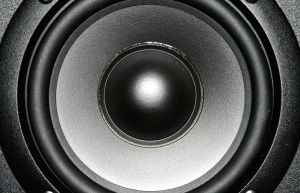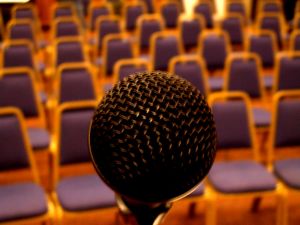DJ Sound for Event Planning
 1. Reverberation
1. Reverberation
Repeated resounding or echoing
2. Attenuation
To reduce the intensity of sound waves
3. Decibel
It is the unit to measure the level of sound.
4. Microphone
It is a device which is used to convert sound waves into electrical
signals.
5. Microphone Mixer
It is a device which is used to combine two or more electrical
signals.
6. Amplifier
It is a device which is used to amplify (i.e. increase the strength
of) electrical signal.
7. Amplified Speakers
This speaker contains a built in amplifier.
8.P.A. System
It is an abbreviation for Public Address System. P.A. System
consist of microphone, mixer, amplifier, speakers etc.
9. Feedback
It is a ringing nose which is produced when a microphone regenerates
the sound picked up from a speaker.
10. Sound Source
It can be a speaker, vocalist or an instrument or any device
which produces sound.
11. Frequency Response
It is a way a device like microphone or environment like a room
respond to different frequencies.
12. Flat Response
It means a device like microphone respond in the same way to
different frequencies i.e. whether the frequency is high or
low, the device is going to respond in the same way. No device
or environment can have a flat response. However they can have
a nearly flat response.
13. Ear Plugs
This device is used to attenuate sound waves. It is worn by
people who work in noisy places like clubs to prevent permanent
damage to hearing.
14. Noise Reduction Rating (NRR)
Any device which has a NRR of less than 20 DB (decibel) is not
of much use.
Types of Microphones
 1. Corded Microphone
1. Corded Microphone
It is a microphone connected to a wire.
2. Wireless Microphone
Microphone without wire
3. Handheld Microphone
4. Lectern Microphone
This microphone is connected to a microphone stand or is placed
on a lectern.
5. Lavaliere Microphone (or clip-on microphone)
This mike is placed on the upper part of a tie or the collar
of a coat or a shirt. The head of the lavaliere mike should
be as close to the mouth as possible.
6. Head worn microphone
7. Hydro phone
It is a water proof microphone.
8. Miniature Microphone
9. Condenser microphones
These microphones are generally used in recording studios
as they are more sensitive.
10. Dynamic microphone
These microphones are generally used in live shows.
Microphones can be classified on the basis of sound
pick up pattern or response pattern as:
1. Directional Microphones
These microphones are of two types:
a. Unidirectional microphones
This microphone picks up sound only from a particular
direction. The most commonly used unidirectional microphone
is Cardioid microphone. Hyper cardioid and shotgun are
other unidirectional microphone.
b. Bi directional microphones
This microphone picks up sound from the front and back
of the microphone but reject sound from the sides of
the microphone. It is also know as Figure-8 microphone.
2. Omni directional Microphone
This microphone picks up sound evenly from all directions.